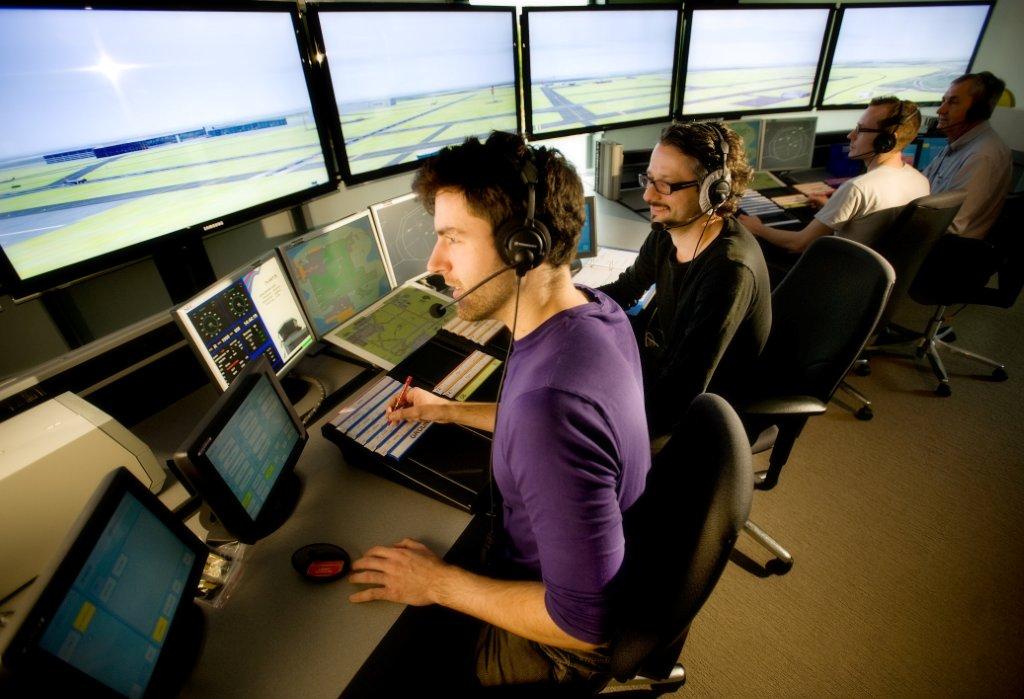Air Traffic Controllers (ATCs) are unsung heroes of aviation enterprise gambling crucial position in making sure protection and performance of air travel. In Canada huge usa with complex airspace device those professionals are spine of aviation region. This article delves into sector of Air Traffic Controllers in Canada exploring their obligations education demanding situations & destiny of this dynamic profession.
An Air Traffic Controller is fantastically trained professional chargeable for directing plane @ floor and within air maintaining safe distances between planes & making sure easy green air visitors drift. They paintings tirelessly to prevent collisions organize and expedite flow of air site visitors & provide facts and aid to pilots.
Given Canadas enormous geographical expanse and its function as chief hub for international air tour Air Traffic Controllers play an fundamental role inside usas aviation sector. They control one of worlds biggest air navigation structures protecting over 18 million rectangular kilometers of domestic and oceanic airspace. Their expertise is critical in handling complexities of Canadian airspace which includes far off regions busy worldwide airports & hard climate situations.
History of Air Traffic Control in Canada

The records of air site visitors manipulate in Canada is closely tied to development of aviation in united states of america. In early 20th century as aviation began to take off need for organized air traffic management have become obvious. first Canadian airmail flight came about in 1918 marking start of ordinary air services in u . S ..
Establishment of Air Traffic Control device
The formal status quo of air visitors control in Canada dates back to 1930s. In 1939 first air visitors manipulate tower in Canada become opened @ St. Hubert Airport in Quebec. This marked start of dependent method to dealing with air site visitors in Canadian skies. Over following many years system evolved hastily adapting to technological advancements and growing complexity of air journey.
Role and Responsibilities
Air Traffic Controllers in Canada have wide variety of obligations all centered around making sure protection and performance of air journey. Their primary duties encompass:
- Monitoring and directing motion of aircraft @ floor and inside air
- Issuing touchdown and take off commands to pilots
- Providing pilots with records about climate conditions flight routes & capability risks
- Coordinating with different air visitors manage facilities and airport operations
- Responding to emergencies and unusual situations
- Managing drift of air site visitors to reduce delays and maximize performance
Types of Air Traffic Controllers
In Canada there are numerous specialised roles within air visitors control:
- Tower Controllers: Manage aircraft @ ground and in on spot region of airport
- Terminal Controllers: Handle aircraft inside airspace round important airports
- En Route Controllers: Manage plane @ excessive altitudes among airports
- Flight Service Specialists: Provide advisory offerings and flight statistics to pilots
Each of those roles requires unique skills and know how contributing to general protection and performance of Canadian air visitors control machine.
Education and Training

Becoming an Air Traffic Controller in Canada calls for unique aggregate of capabilities schooling & private traits. fundamental qualifications consist of:
- Canadian citizenship or permanent resident reputation
- High school diploma or equivalent
- Ability to speak English or French fluently (bilingualism is an asset)
- Strong problem solving and selection making abilities
- Excellent communication and teamwork talents
- Ability to work beneath pressure and keep recognition
Additionally candidates have to bypass series of aptitude tests that determine their spatial awareness reminiscence & potential to multitask.
Training process
The schooling procedure for Air Traffic Controllers in Canada is rigorous and comprehensive. It commonly involves subsequent steps:
- Initial screening and flair trying out
- Basic air traffic services course (approximately 2 months)
- Specialty training for unique ATC roles (6 14 months)
- On process education @ an operational unit (up to 6 months)
- Licensing and certification
The whole method can take everywhere from 18 months to 3 years relying on specific position and person progress.
Ongoing training
Air Traffic Control is discipline that requires non stop getting to know and version. Controllers must live up to date with trendy technology strategies & guidelines. Ongoing schooling consists of:
- Regular refresher courses
- Simulator training to exercise managing uncommon conditions
- Updates on new aviation technologies and procedures
- Periodic clinical and skillability checks to keep licensing
This dedication to ongoing education guarantees that Canadian Air Traffic Controllers remain @ vanguard of global aviation safety standards.
Working Environment
Control towers : Control towers are long lasting places of work of Air Traffic Controllers. In Canada those towers are strategically placed @ airports to offer clear view of runways taxiways & surrounding airspace. environment inside manipulate tower is distinctly focused and technologically superior geared up with radar screens conversation systems & climate monitoring equipment.
Area manage facilities
Area manage centers additionally called en path facilities control aircraft @ better altitudes and over large geographical regions. Canada has seven place manipulate facilities each answerable for selected vicinity of usas airspace. These centers are equipped with state of art radar and conversation systems to track and guide plane throughout big distances.
Technology and system
Canadian Air Traffic Controllers paintings with todays generation to control complex air traffic device. Some of key gadget consists of:
- Radar systems for tracking aircraft positions
- Flight records processing systems
- Voice verbal exchange systems for interacting with pilots and different controllers
- Weather tracking and forecasting gear
- Automated conflict detection and resolution structures
The integration of these technologies permits controllers to make informed decisions fast and efficaciously making sure protection of heaps of flights each day.
Challenges Faced by means of Canadian Air Traffic Controllers

High strain work surroundings : One of most significant challenges faced by means of Air Traffic Controllers is excessive stress nature in their work. They have to maintain steady vigilance make cut up second choices & control couple of aircraft concurrently. This steady stress can cause fatigue and pressure associated fitness troubles if now not properly managed.
Weather situations
Canadas diverse and frequently extreme weather situations pose unique demanding situations for Air Traffic Controllers. From heavy snowstorms inside prairies to dense fog @ coasts controllers have to adapt their strategies to ensure secure operations in all weather eventualities. They work closely with meteorologists and use advanced weather prediction tools to count on and mitigate climate related dangers.
Increasing air traffic
The increase of air journey in Canada has led to more and more congested airspace specifically around primary urban facilities. Controllers ought to find ways to safely accommodate extra flights within confined airspace balancing efficiency with safety. This undertaking requires consistent refinement of tactics and implementation of recent technology to optimize airspace utilization.
Air Traffic Control Organizations in Canada
NAV CANADA
NAV CANADA is countrys civil air navigation provider issuer answerable for safe and green movement of plane in Canadian domestic and worldwide airspace. Established in 1996 as private non percentage capital corporation NAV CANADA manages air traffic manipulate flight information climate briefings aeronautical statistics offerings & electronic aids to navigation.
Transport Canada
While NAV CANADA operates air navigation gadget Transport Canada remains regulatory body overseeing civil aviation inside us of a. It units and enforces safety requirements certifies employees and system & conducts protection oversight of air navigation device.
Canadian Air Traffic Control Association (CATCA)
CATCA is labor union representing Air Traffic Controllers in Canada. It performs vital function in negotiating operating situations advocating for safety improvements & representing pastimes of controllers in discussions with NAV CANADA and authorities bodies.
Career Prospects and Job Outlook
Salary and blessings
Air Traffic Controllers in Canada are well compensated for their critical position and excessive degree of duty. As of 2024 common income for an Air Traffic Controller in Canada degrees from CAD eighty000 to CAD one hundred fifty000 consistent with 12 months depending on enjoy and region. Benefits normally consist of comprehensive health insurance pension plans & paid break day.
Career development
Career progression for Air Traffic Controllers can take several paths:
- Advancing to extra complex control positions (e.G. from tower to location control)
- Moving into supervisory or management roles within air site visitors services
- Transitioning to schooling or safety evaluation positions
- Pursuing possibilities in worldwide air site visitors management companies
Future call for
The demand for Air Traffic Controllers in Canada is anticipated to stay stable in coming years. While technological improvements might also exchange some components of process crucial human element in air visitors management guarantees ongoing profession possibilities. Additionally expected increase in air tour publish pandemic may additionally lead to accelerated call for for professional controllers.
Innovations in Canadian Air Traffic Control

Technological advancements
Canada has been @ leading edge of implementing innovative technology in air site visitors control. Some latest improvements include:
- Space based totally ADS B (Automatic Dependent Surveillance Broadcast) for improved aircraft tracking over far flung areas
- Digital tower technologies for greater visibility and statistics integration
- Advanced surface motion guidance and manage systems for advanced floor traffic management
These technology decorate protection performance & general potential of air traffic control machine.
Automation and AI integration
While human controllers stay critical automation and artificial intelligence are more and more being included into air site visitors control structures. These technologies help controllers by using:
- Predicting capability conflicts among aircraft
- Optimizing flight routes for fuel performance and decreased emissions
- Enhancing selection making strategies with information pushed insights
The integration of those technology goals to aid controllers in handling increasingly complicated airspace even as preserving very best safety requirements.
Safety Measures and Protocols
Collision avoidance systems
Canadian air visitors control employs couple of layers of safety structures to save you collisions. These include:
- TCAS (Traffic Collision Avoidance System) on plane
- Ground primarily based struggle detection and backbone gear
- Separation requirements enforced by means of controllers
These structures work in live performance to provide redundancy and ensure very best level of protection in Canadian airspace.
Emergency strategies
Air Traffic Controllers are skilled to handle wide range of emergency situations along with:
- Aircraft in misery
- Severe climate occasions
- Airspace safety threats
Controllers observe installed protocols and coordinate with emergency services to manipulate these conditions successfully.
Safety guidelines
Canada maintains strict safety rules for air traffic control aligned with worldwide standards set by way of International Civil Aviation Organization (ICAO). These regulations cowl regions together with:
- Controller training and certification
- Equipment requirements and maintenance
- Operational techniques and protection control systems
Regular audits and inspections make certain compliance with these policies maintaining high safety requirements of Canadian air traffic control.
Air Traffic Control and Canadian Airspace

Canadian airspace is divided into seven training (A B C D E F & G) every with specific rules and tactics. Air Traffic Controllers have to be familiar with these classifications to provide appropriate offerings to plane running in distinctive parts of airspace.
Flight Information Regions (FIRs)
Canadas airspace is further divided into Flight Information Regions (FIRs) every managed by using selected area manipulate middle. These FIRs include:
- Vancouver FIR
- Edmonton FIR
- Winnipeg FIR
- Toronto FIR
- Montreal FIR
- Moncton FIR
- Gander Oceanic FIR
Controllers in every FIR coordinate with adjoining areas to make sure seamless transitions for aircraft crossing FIR boundaries.
International Cooperation
Collaboration with US air visitors manipulate
Given shared border and excessive volume of cross border visitors close collaboration among Canadian and US air site visitors control is crucial. This cooperation includes:
- Coordinated techniques for move border flights
- Shared technologies and facts alternate
- Regular conferences and joint training sports
This collaboration guarantees smooth and safe operations in busy North American airspace.
Global air visitors control tasks
Canada actively participates in international projects to enhance air site visitors management inclusive of:
- ICAOs Global Air Navigation Plan
- Single European Sky ATM Research (SESAR) application
- NextGen application in United States
These projects goal to harmonize air site visitors control practices globally improving protection and performance across global obstacles.
Environmental Considerations
Noise reduction techniques
Air Traffic Controllers play position in imposing noise reduction strategies round airports. These may additionally encompass:
- Designing flight paths to avoid noise sensitive regions
- Implementing continuous descent techniques to reduce engine noise
- Coordinating with airports on preferential runway usage
Fuel efficiency and emissions reduction
Controllers contribute to environmental sustainability via:
- Optimizing flight routes to lessen gas intake
- Implementing processes that permit for greater direct routes
- Collaborating with airlines on gas green descent profiles
These efforts assist reduce aviation industrys carbon footprint while keeping protection and efficiency.
Case Study

Toronto Pearson International Airport
As Canadas busiest airport Toronto Pearson presents specific demanding situations for Air Traffic Controllers. They manage:
- High site visitors extent with over 1two hundred every day flights (pre pandemic)
- Complex airspace shared with close by airports
- Frequent climate related disruptions
Controllers @ Pearson use advanced technology and coordinated strategies to ensure safe and efficient operations in this annoying environment.
Vancouver International Airport
Vancouver International Airport chief gateway to Asia Pacific calls for controllers to manage:
- Long haul global flights
- Challenging topography with mountains and water
- Diverse weather conditions inclusive of fog and heavy rain
The success control of these factors demonstrates skill and adaptableness of Canadian Air Traffic Controllers.
Future of Air Traffic Control in Canada
Emerging technologies
The destiny of air traffic manipulate in Canada is likely to be fashioned with aid of rising technology consisting of:
- Artificial intelligence for predictive air visitors management
- Remote tower operations for smaller airports
- Integration of unmanned aerial vehicles (drones) into controlled airspace
These technology promise to decorate capability and protection @ same time as potentially converting character of controllers position.
Potential changes in airspace control
Future changes in airspace management may also consist of:
- More flexible and dynamic airspace configurations
- Increased automation of habitual duties
- Enhanced statistics sharing among stakeholders
These adjustments goal to create extra efficient and responsive air site visitors management gadget capable of handling future increase in air travel.







